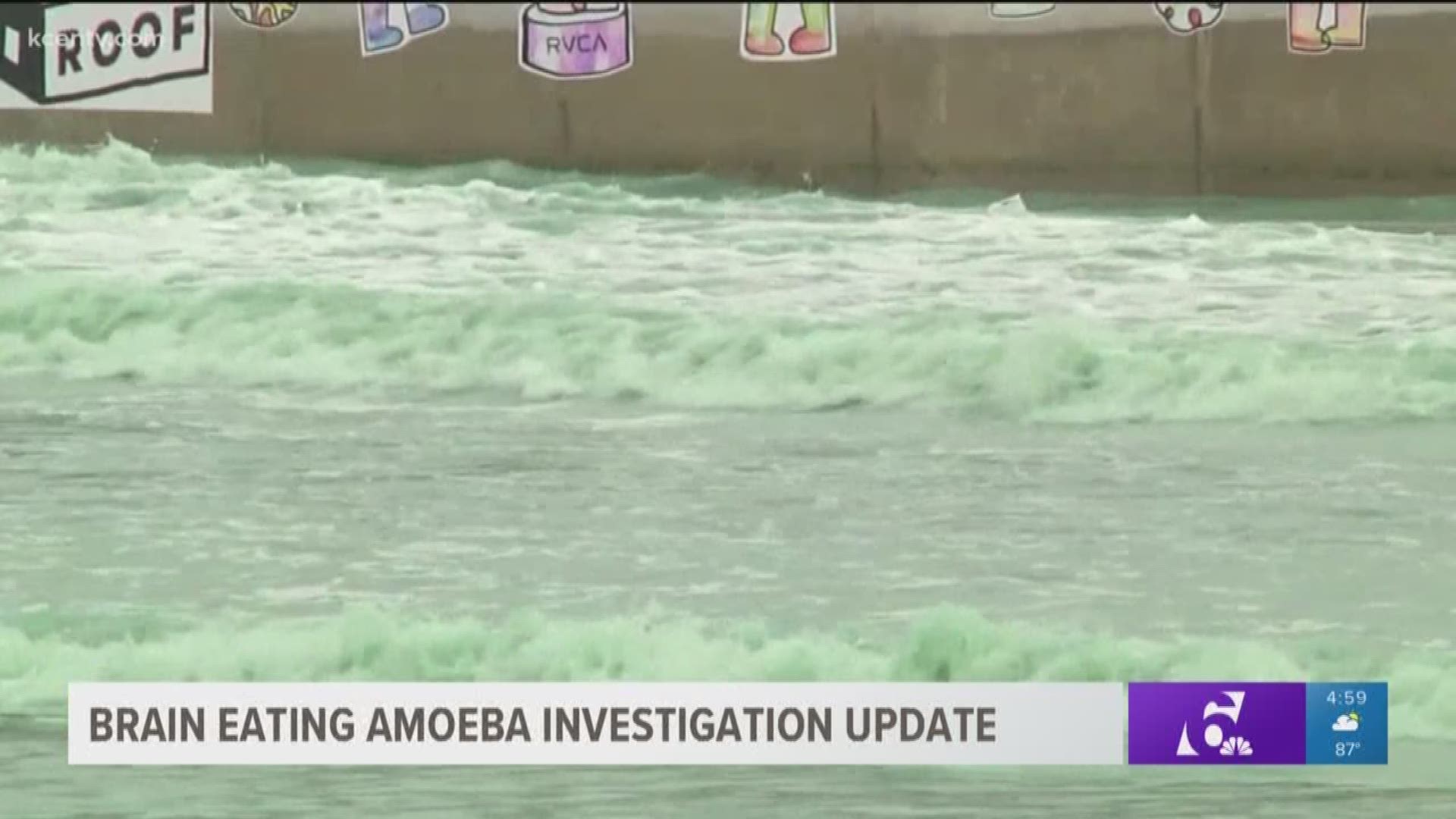TEMPLE, Texas — The BSR Surf Resort in Waco voluntarily closed its wave pool Sunday after a New Jersey surfer who visited the pool died from Naegleria fowleri, also known as a "brain-eating amoeba."
The Centers for Disease Control and Prevention tested the water following Fabrizio "Fab" Stabile's death.
CDC crews collected water samples to try to find the source of the contamination. The park is expected to remain closed until the results of the water test are complete.
What is brain-eating Amoeba?
According to WebMD, the bug was discovered in 1965 in Australia. There are several species of Naegleria, but only the fowleri species causes human disease, the WebMD website says. In the right conditions, the amoebas turn into trophozoites -- the kind of amoeba that feeds.
Where are brain-eating amoebas found?
Brain-eating amoebas need a hot, wet environment to survive. It can survive in water as hot as 113 degrees, WebMD says.
They can be found in the following area:
- Warm lakes, ponds, and rock pits
- Mud puddles
- Warm, slow-flowing rivers, especially those with low water levels
- Untreated swimming pools and spas
- Untreated well water or untreated municipal water
- Hot springs and other geothermal water sources
- Thermally polluted water, such as runoff from power plants
- Aquariums
- Soil, including indoor dust
The parasite cannot live in saltwater or survive in properly treated pools. More than half of all infections have been in Florida and Texas, the site says.
How do you get the infection?
Brain-eating amoeba usually infects people through the nose, then travels to the brain, where it destroys the tissue, according to the CDC.
You cannot be infected by drinking water. It is not contagious.
Is there a cure?
There are several treatments for brain-eating amoeba, but it is unclear if the treatments are effective since almost all infected people have died.
The fatality rate for the amoeba is more than 97 percent, according to the CDC. Only four out of 143 known infected individuals in the United States from 1962 to 2017 survived, the CDC said.
What are the symptoms?
Symptoms of Naegleria fowleri include a headache, fever, nausea or vomiting and usually start one to nine days after the initial infection. Later symptoms can include stiff neck, confusion, lack of attention to people and surroundings, loss of balance, seizures, and hallucinations.
Once symptoms begin, the disease progresses rapidly and typically causes death in five days.
BSR Surf Resort is closed for the winter, according to its website. The Cable Park is operating on fall hours, Friday through Sunday 11 a.m. until 7 p.m.
The City of Waco released the following public health notice on Monday on its website:
"Waco-McLennan County Public Health District has been notified by the Texas Department of State Health Services and the Centers for Disease Control and Prevention of an individual who visited the BSR Surf Resort in September 2018 and was diagnosed with Primary Amebic Meningoencephalitis.
"Naegleria fowleri is the free-living ameba (single-celled organism) that causes PAM, a rare and devastating brain infection with a fatality rate of over 97%. Infection occurs when contaminated water enters the body through the nose and the ameba travels to the brain, where it destroys the brain tissue.
"BSR Surf Resort is cooperating with WMCPHD and is participating in an investigation by WMCPHD to identify possible risks of Naegleria fowleri growth in the facility’s water system. Numerous water samples have been taken and are being tested in order to determine the possible source(s) of Naegleria fowleri. The results of these tests are pending. The investigation is still in progress and out of abundance of caution; the facility has voluntarily closed to the general public. Once the investigation is complete the Health District will provide information.
"Naegleria fowleri infections most often occur when people engage in recreational activities like diving and swimming in warm freshwaters (e.g., lakes, rivers, ponds, and hot springs). Infections have occurred after exposure to artificially created freshwater recreational facilities. Infection does not occur by drinking contaminated water. Most infections occur in July, August, and September. Nine PAM cases have been reported in Texas since 2005.
"Infections of Naegleria fowleri are extremely rare, but the organism is ubiquitous in warm freshwater making the risk of infection always present. The only way to prevent N. fowleri infection is to refrain from water-related activities in freshwater. Actions that people can take to reduce the risk of N. fowleri infection should focus on limiting water exposure going up the nose.
- Avoid water-related activities in freshwater during periods of high water temperatures and low water levels.
- Hold your nose shut, use nose clips, or keep your head above water when taking part in water-related activities in bodies of warm freshwater, hot springs, or untreated water.
- Avoid digging up or stirring up sediment while engaging in water-related activities in shallow, warm freshwater.
- If you use a Neti-Pot or syringe for nasal irrigation or participate in ritual nasal rinsing be sure to use only sterile, distilled, or lukewarm previously boiled water.
"If you experience any of the symptoms mentioned in the fact sheet within fourteen days of your visit at the BSR Surf Resort, please contact your health care provider (HCP) immediately. Let your HCP know that you may have been exposed to Naegleria fowleri."

